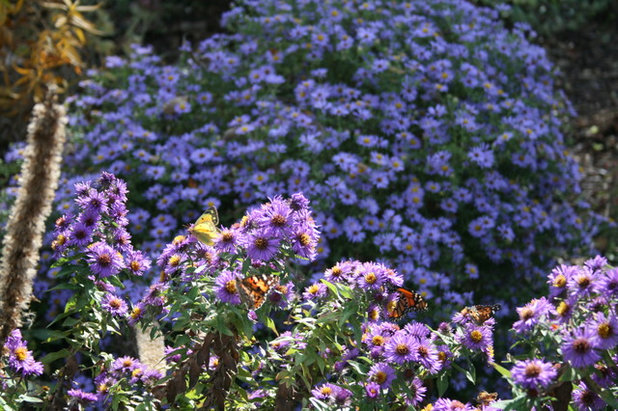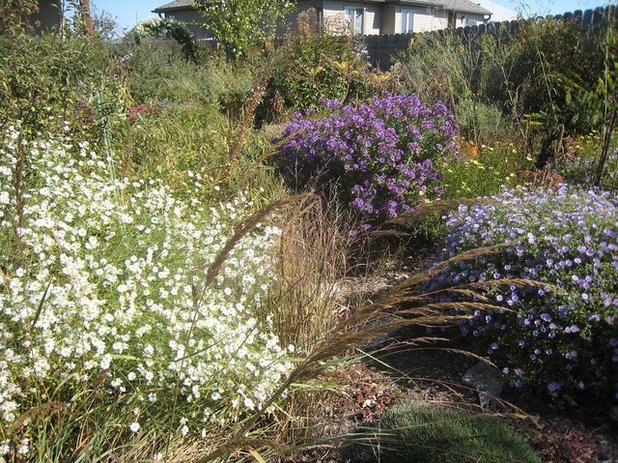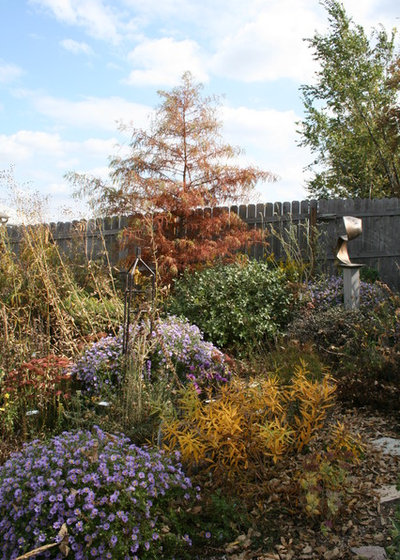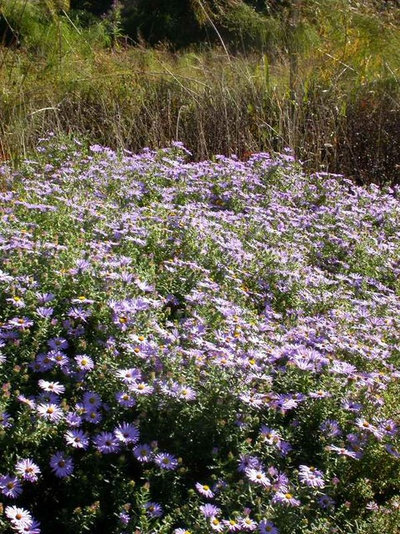I have at least a dozen species of aster in my garden, from shade lovers to sun lovers, drought tolerators and rain garden mainstays. But in my top three is aromatic aster, because it grows in even the worst soil and blooms and blooms and blooms — even after many frosts. The beneficial insects sure appreciate its late-fall nectar, too.

Benjamin Vogt / Monarch Gardens
Botanical name: Symphyotrichum oblongifoliumCommon name: Aromatic aster
Origin: Eastern U.S.
Where it will grow: Hardy to -40 degrees Fahrenheit (USDA zones 3 to 9; find your zone)
Water requirement: Dry to medium soil
Light requirement: Full sun to 25 percent shade
Mature size: 1 foot to 2 feet tall and 2 to 3 feet wide; slowly spreading shrub habit
Benefits: Mid- to late-fall blooms over many weeks; great nectar source for butterflies; very low maintenance and super drought tolerant
Seasonal interest: Violet to blue blooms from October on
When to plant: Spring to fall

Benjamin Vogt / Monarch Gardens
Distinguishing traits. Aromatic aster comes in both the straight species and a great cultivar called 'October Skies'. What makes the cultivar stand out is its rounder shrub habit and slightly bluer flowers. Aromatic aster thrives in dry soils, from clay to rocky, and seems to enjoy being neglected. In open soil it may gently reseed, but it's not invasive at all.

Benjamin Vogt / Monarch Gardens
How to use it. In this photo aromatic aster is a late-season accent among perennials that are already bare and ugly. It can really pick up the slack when everything else has lost its leaves. You could also use it as a shrub border, or as a front-of-the-border plant in a more formal design.

Missouri Botanical Garden
Planting notes. Give it hot sun and dry soil and it will thank you. Seriously. Once established it's one of the most carefree asters on the planet. All kinds of late-season insects gather nectar from it as they end migrations or buckle down for winter hibernation. Give it more sun for more flowers, but it can take a fair amount of shade.





